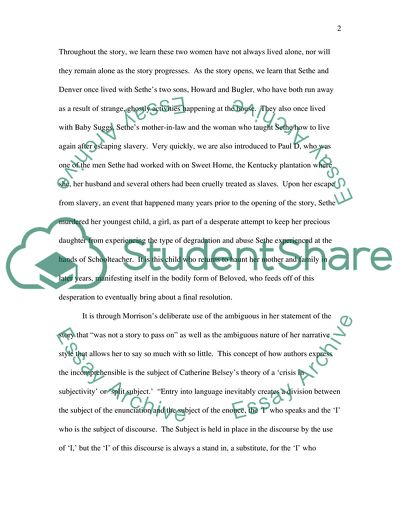Cite this document
(Beloved by Toni Morrison Literature review Example | Topics and Well Written Essays - 2500 words, n.d.)
Beloved by Toni Morrison Literature review Example | Topics and Well Written Essays - 2500 words. Retrieved from https://studentshare.org/literature/1538412-an-extensive-analysis-of-beloved-by-toni-morrison
Beloved by Toni Morrison Literature review Example | Topics and Well Written Essays - 2500 words. Retrieved from https://studentshare.org/literature/1538412-an-extensive-analysis-of-beloved-by-toni-morrison
(Beloved by Toni Morrison Literature Review Example | Topics and Well Written Essays - 2500 Words)
Beloved by Toni Morrison Literature Review Example | Topics and Well Written Essays - 2500 Words. https://studentshare.org/literature/1538412-an-extensive-analysis-of-beloved-by-toni-morrison.
Beloved by Toni Morrison Literature Review Example | Topics and Well Written Essays - 2500 Words. https://studentshare.org/literature/1538412-an-extensive-analysis-of-beloved-by-toni-morrison.
“Beloved by Toni Morrison Literature Review Example | Topics and Well Written Essays - 2500 Words”. https://studentshare.org/literature/1538412-an-extensive-analysis-of-beloved-by-toni-morrison.


